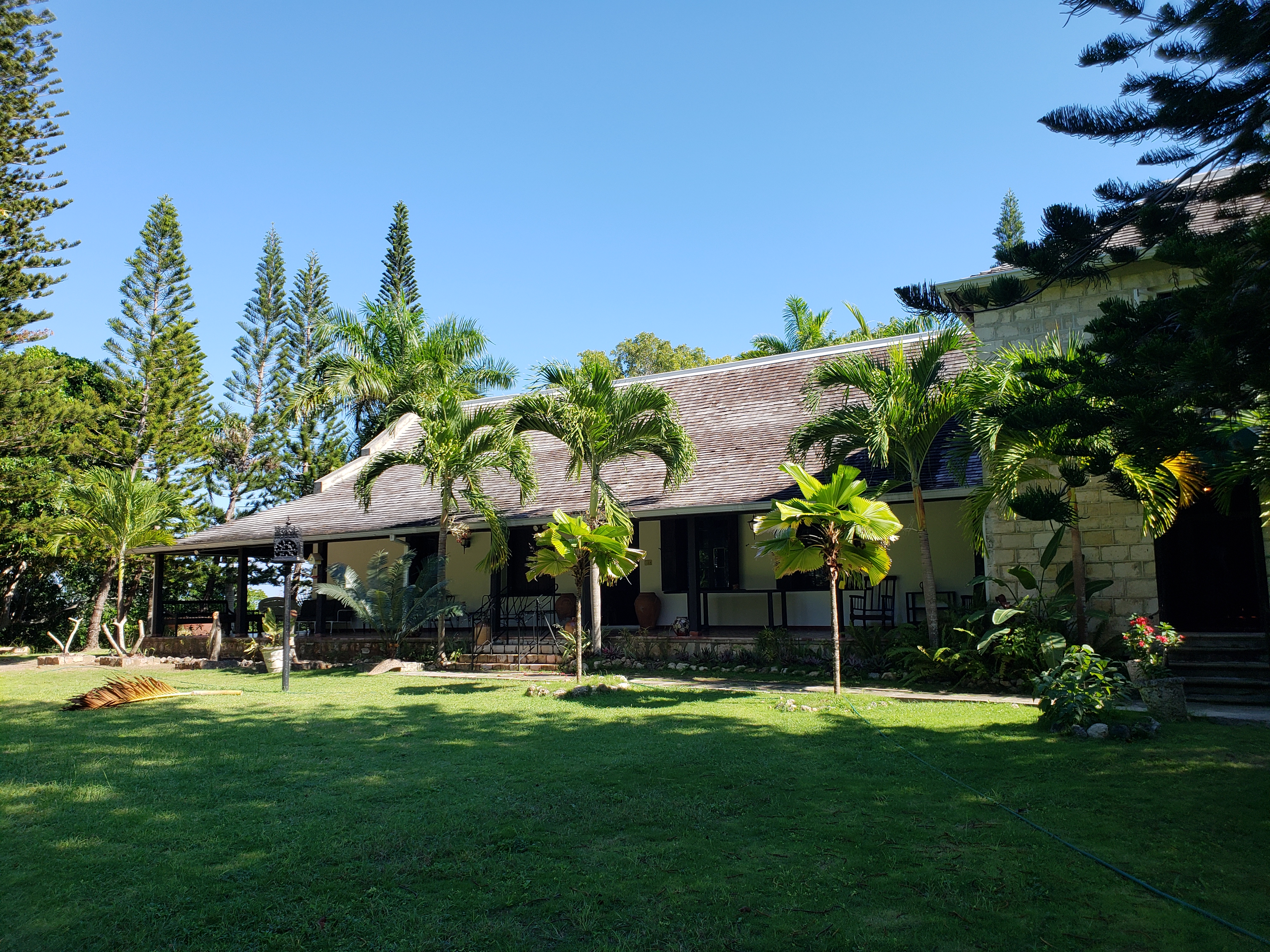
Cinnamon Hill (Photo: Emily O’Dell)
Welcome to Cinnamon Hill–the home of Johnny Cash and June Carter Cash in Jamaica for 40 years. Fortunately, right before I left Jamaica, my friend emailed me to tell me that Johnny Cash and June Cash had a home in Jamaica that she had visited 20 years before. So after some asking around, I found my way to Cinnamon Hill–their peaceful Jamaican abode.

What a porch (Photo: Emily O’Dell)
My driver had asked for directions to Cinnamon Hill at Rose Hall (the haunted house nearby), where the staff said I had to buy a ticket to see the Cash house. But when we got to the ticket booth, there were no signs about Johnny Cash; regardless, they took my money and disappeared. Turns out they were getting the house ready for me! Visitors to the Cash house are rare (about 15 a week), so they had to get it ready and fetch me a tour guide. If you’re not in the “know,” you wouldn’t know it existed–or where it’s located or how it’s accessed. After about 15 minutes of waiting, a guide jumped in our van and directed us 5 minutes down the bumpy road to Johnny and June Cash’s lovely home away from home. Johnny Cash, the tour guide explained, chose to keep the road bumpy because it reminded him of being back home. After we pulled into the property, the first building we passed by (below) is where June Carter Cash liked to sew.

Sewing time (Photo: Emily O’Dell)
The first chapter of Johnny Cash’s autobiography is entitled Cinnamon Hill, after their 1747 Jamaican home (the film was based on the book but leaves out Jamaica, even though Jamaica was such a big part of Johnny and June Carter Cash’s lives). They bought it from their friend John Rollins, who owned Rose Hall and renovated them both.

Right this way (Photo: Emily O’Dell)
When we stepped up onto the porch, Johnny Cash started to sing–his voice was coming from deep inside the house, inviting us in (a poignant touch). That porch with a view of the tall palms–well I could have stayed on it forever. I wanted to live on that porch–it is perfect in every way.
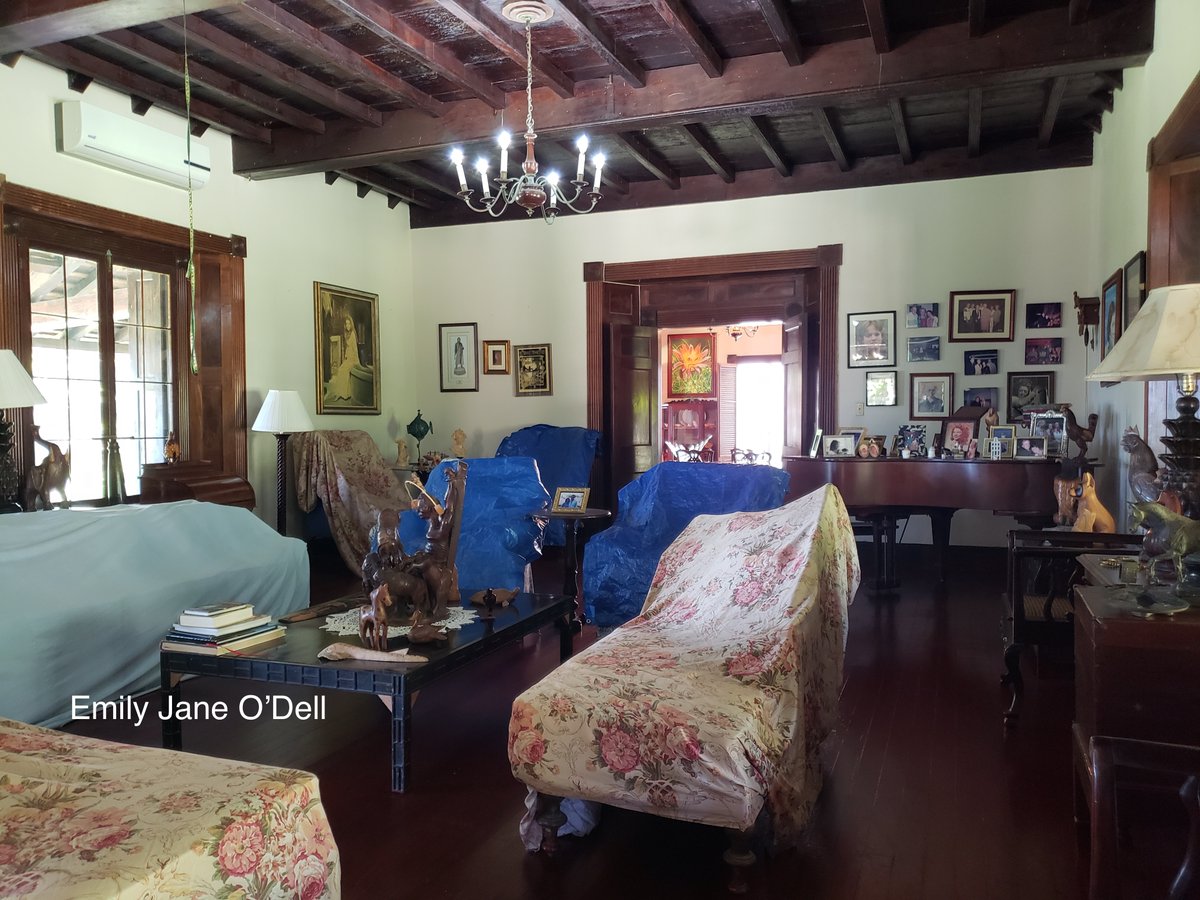
Living room (Photo: Emily O’Dell)
We had the house all to ourselves. It’s preserved just like it was when they were living–with all of their furniture, the piano, the photographs, the tchotchkes. All of the dark wood in the house is from Jamaica–so much Jamaican mahogany.

Photos on the piano
This house ain’t no grave–it’s alive with so many ghosts! In the book, Johnny discusses the presence of actual ghosts in their home, and he learned how to peacefully live with them. The Cash’s time on Cinnamon Hill was idyllic, save for one terrifying break-in (to read about the Cash’s traumatic home invasion by addicts in 1982, click
here).

Portrait of June (Photo: Emily O’Dell)
After sneaking into the tiny hurricane room that they transformed into a shower and bathroom, we proceeded to the the breakfast room, which has a view of the pool that June Carter was building but never finished. After her death, her friends who own Rose Hall finished it for her. Soon, the tour guide said, cruise ship passengers will be allowed to swim in it as part of their itinerary.

Breakfast room (Photo: Emily O’Dell)
Johnny used to play cards in the breakfast room after breakfast, and I had fun surveying his books in that room and others–an anthropology of sorts of their time in Jamaica with the help of my camera.

Napkin holders (Photo: Emily O’Dell)
Cinnamon Hill was once a sugarcane plantation–owned by the ancestors of the poet Elizabeth Barrett Browning. It was not burned down in the slave rebellion of 1831 like so many other properties. Her ancestors, as you can see in this newspaper article posted in the breakfast room, actually fought against the abolition of slavery–and journeyed back to England to fight hard against it. Johnny was well aware of his home’s slavery past (and on the tour they pointed out the door to the basement where the slaves would have been punished).
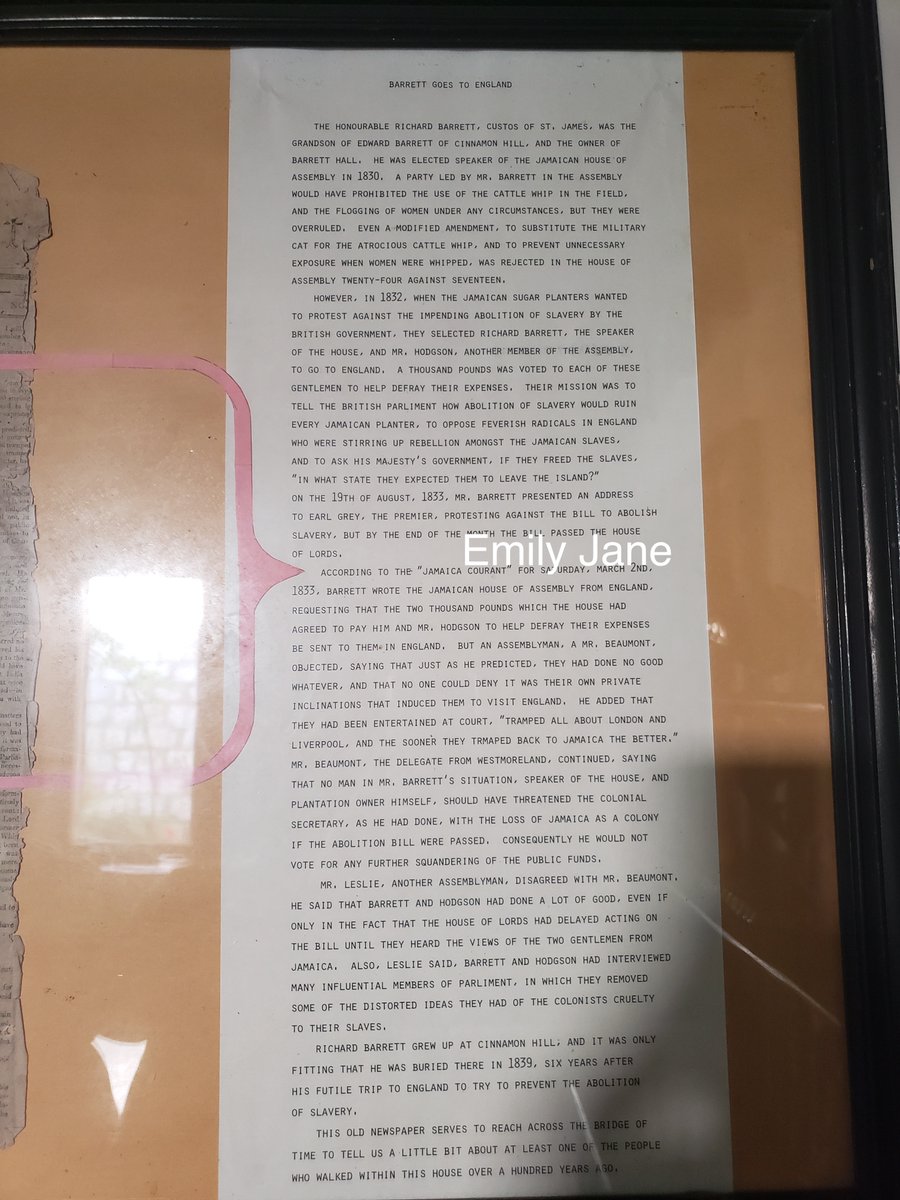
Barrett in the papers (Photo: Emily O’Dell)
Cash wrote about Cinnamon Hill: “The past is palpably present in and around Cinnamon Hill, the reminders of other times and other generations everywhere, some obvious, some not. For more than a century this was a sugar plantation worked by thousands of slaves who lived in clusters of shacks all over the property. All that remains of those people now, the metal hinges from their doors and nails from their walls, lies hidden in the undergrowth on the hillsides or in the soil just below the manicured sod of the golf course that loops around my house. I doubt that the vacationers playing those beautiful links have any idea, any concept, of the kind of life that once teemed where they walk—though perhaps some do, you never know.”
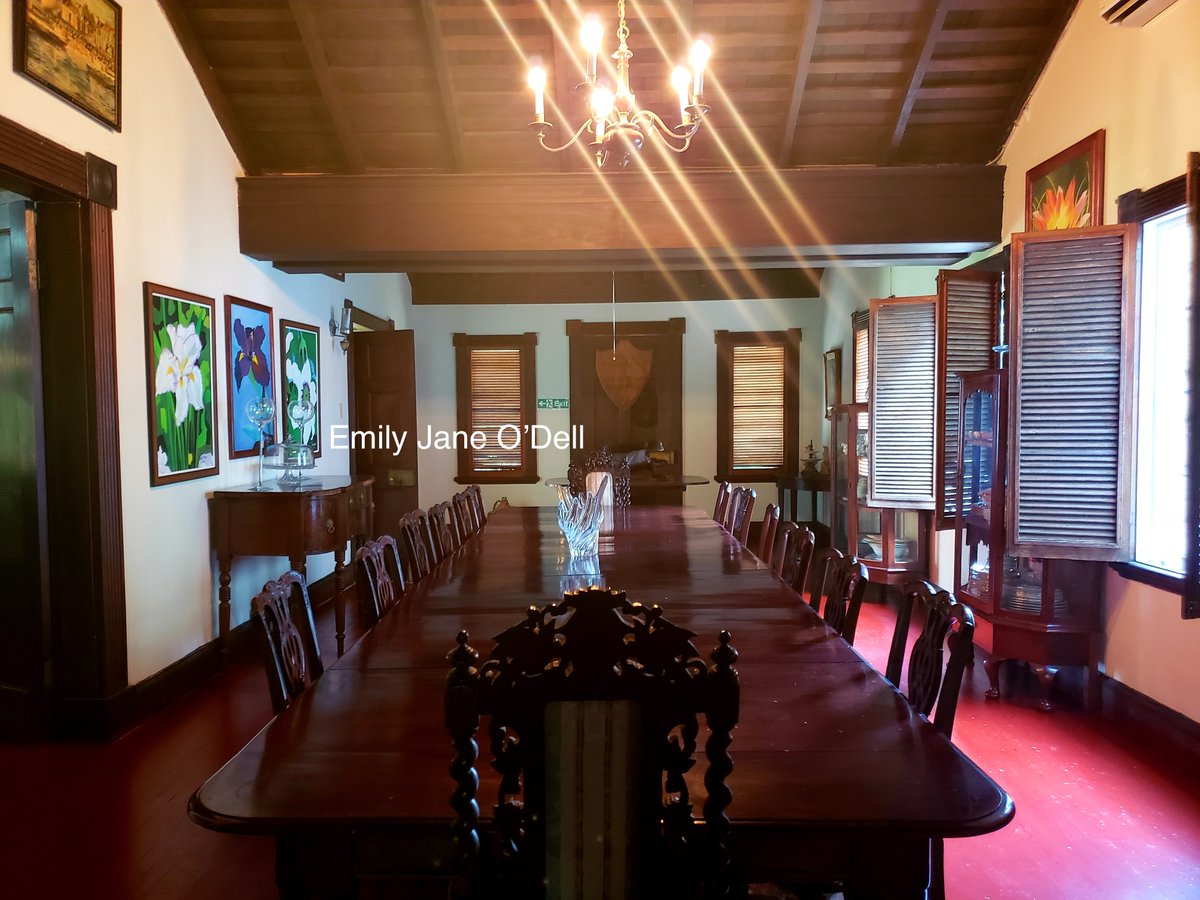
Dining room (Photo: Emily O’Dell)
In the dining room, we perused June’s china and old, decaying clock (the passage of time rendered real), and took in the long dining room table from all angles–imagining all of the famous guests who had once dined there.
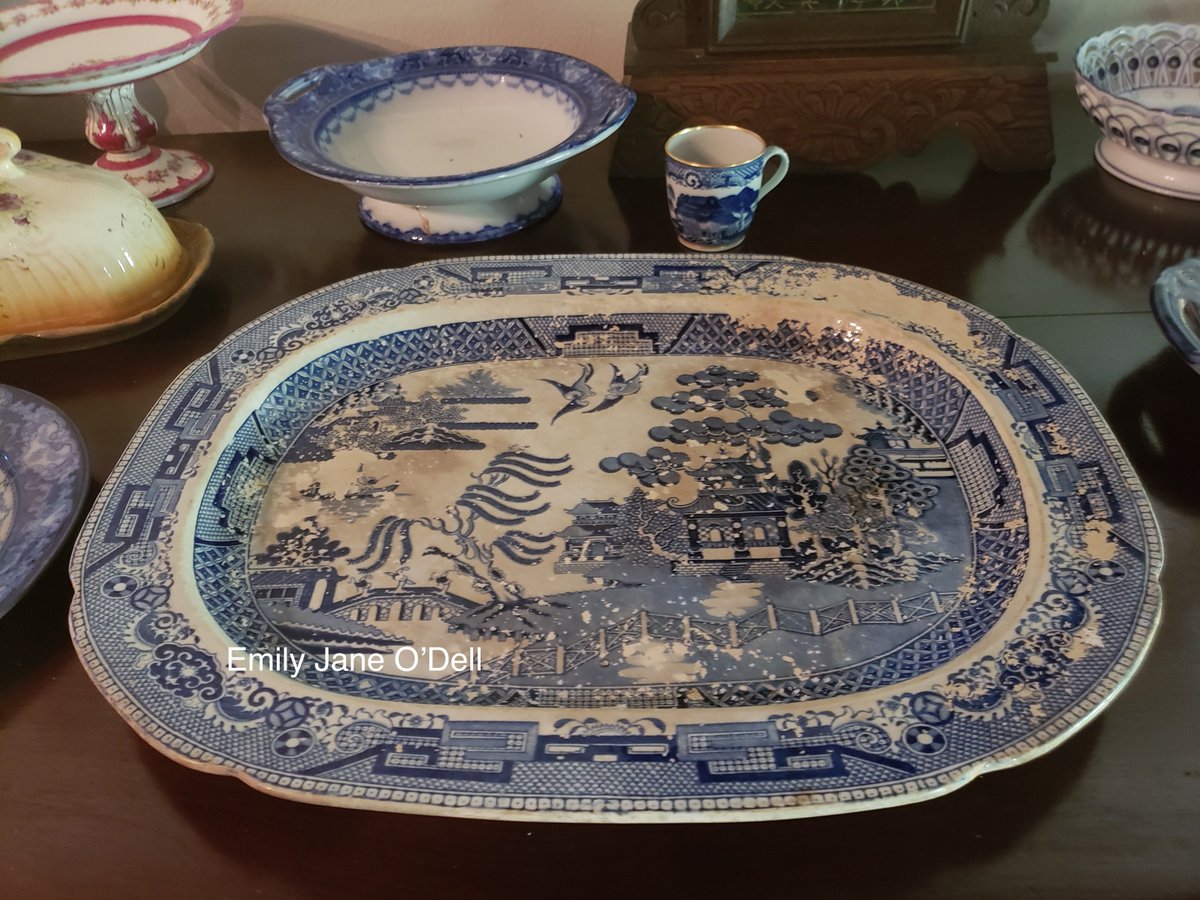
June’s china (Photo: Emily O’Dell)
Scattered throughout the house are old photographs, some framed, some propped up against a mirror on the dresser–others set up in chairs. The photographs are a window into their family life–and their fading faces add to the ghost-like feeling permeating the house.
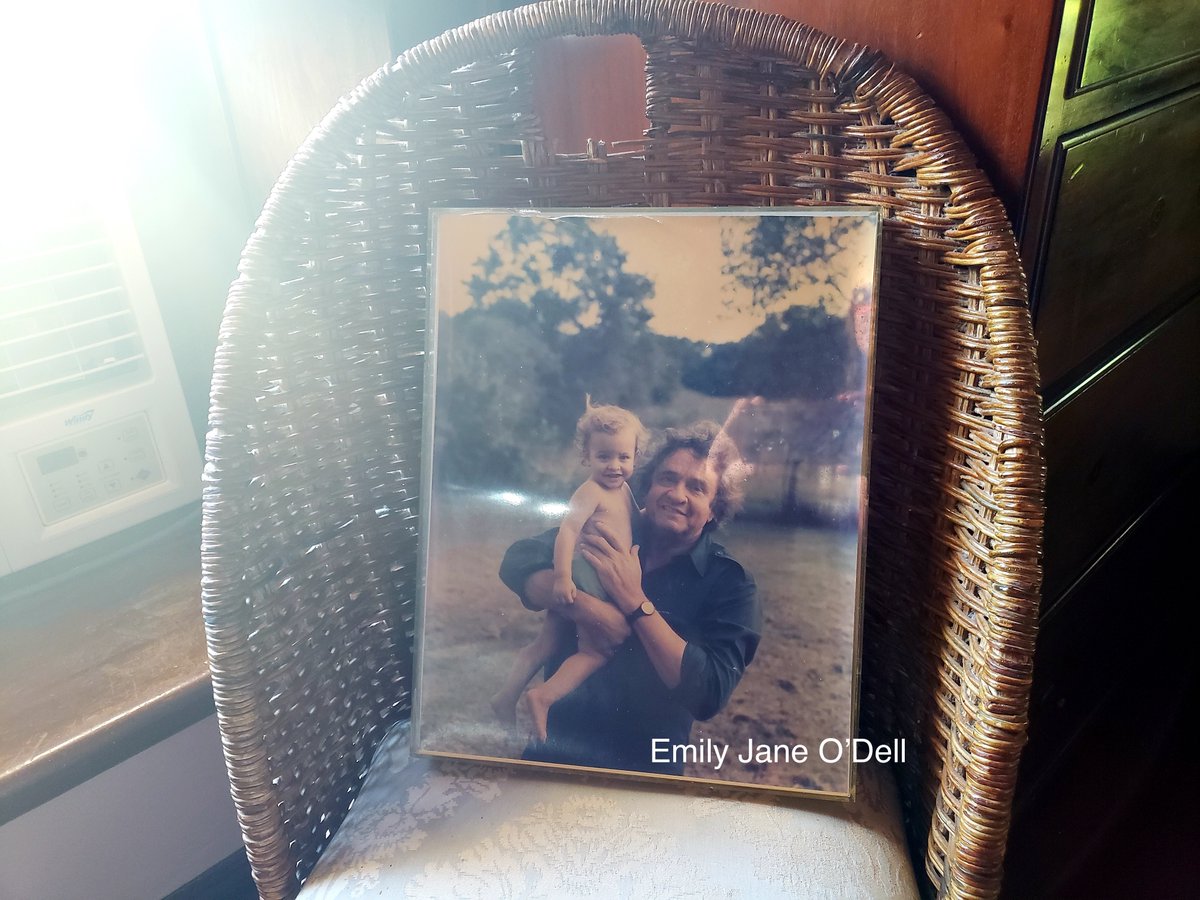
Memories (Photo: Emily O’Dell)
There are a number of guest rooms, each with canopied beds and decorated in the Jamaican style. We took our time in each room, since we were the only ones there. I wanted to read the house like a text, take in every detail, make connections, and photograph it like all I do all museums that I visit–one object at a time.
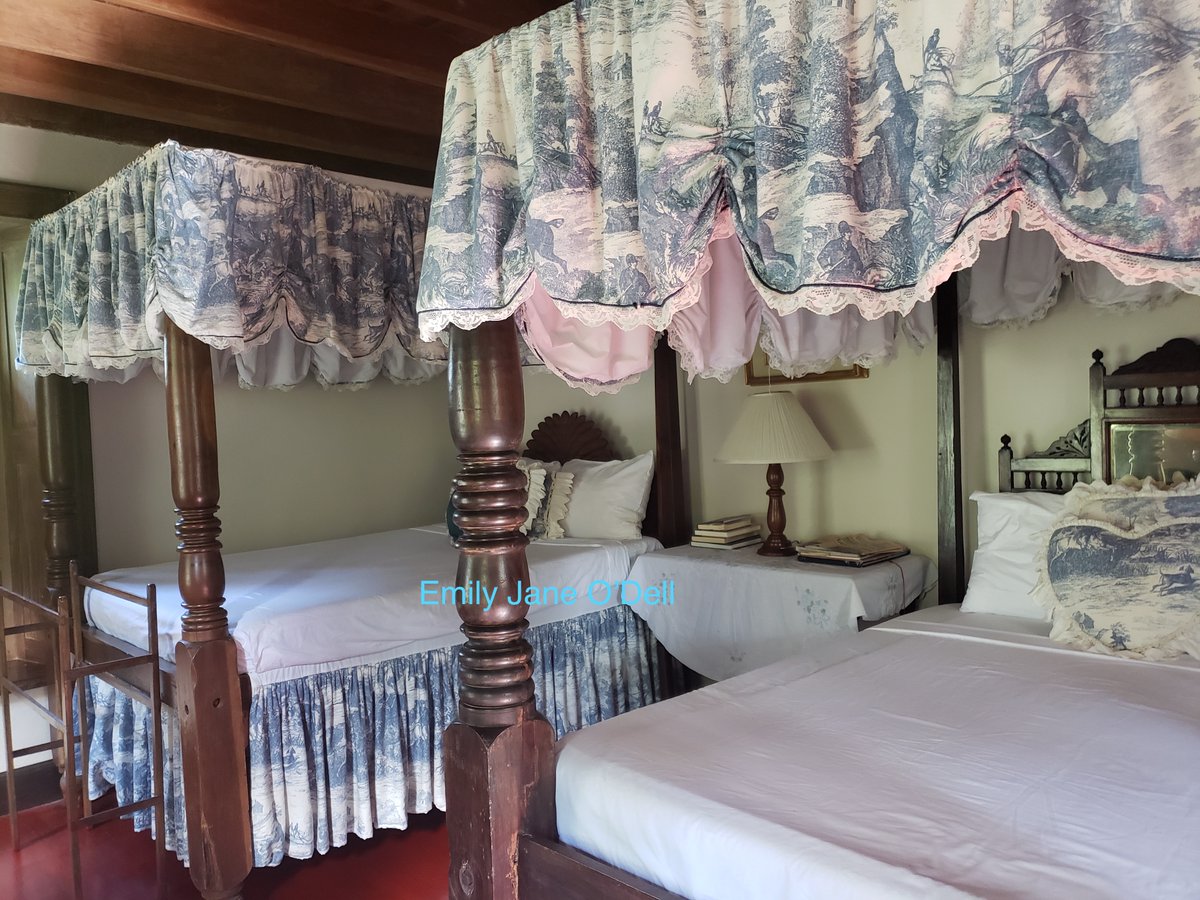
Guest bedroom (Photo: Emily O’Dell)
As we passed by the fabulous swing doors of the kitchen, we made our way upstairs past a giant dried out crocodile hanging on the wall to go see the master bedroom and other rooms upstairs.
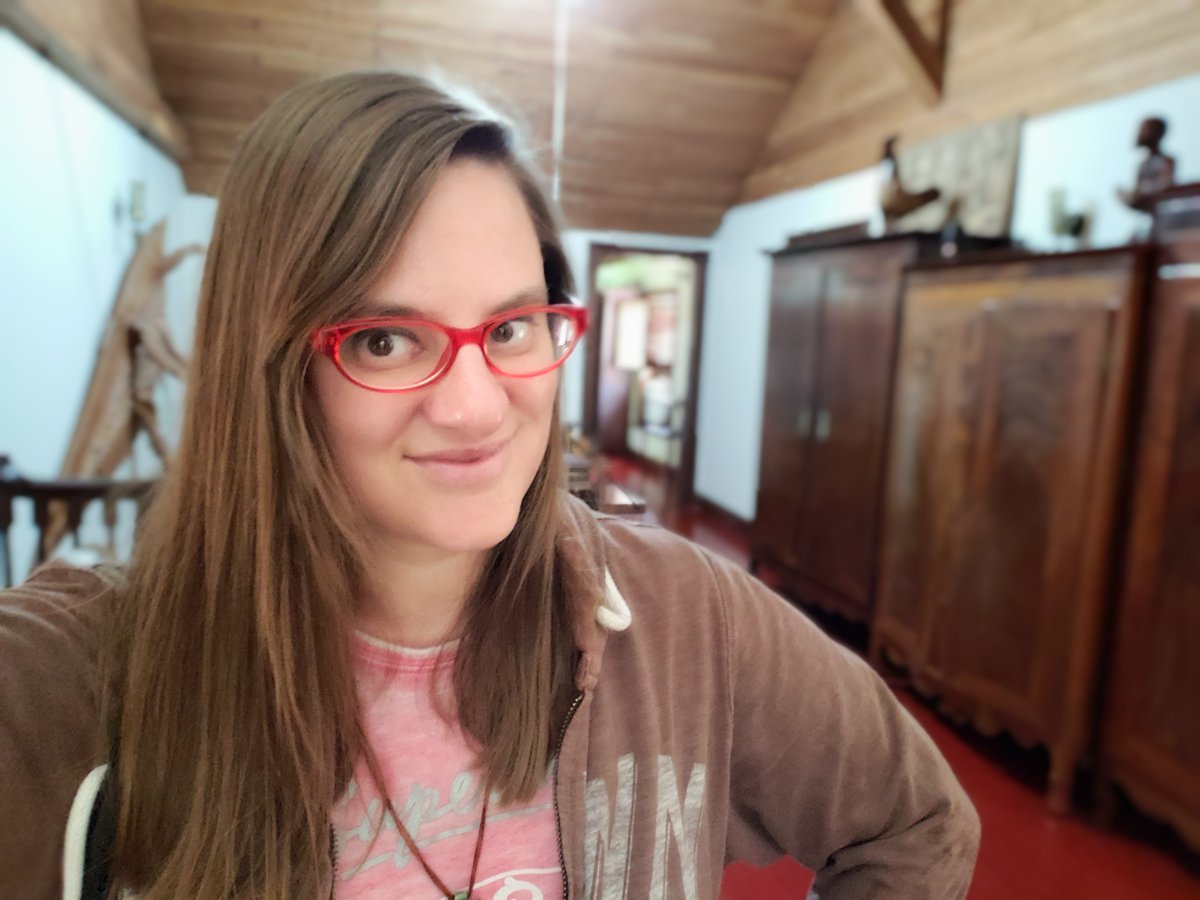
Upstairs (Photo: Emily O’Dell)
The master bedroom had an otherworldly quality to it–like a shrine. The intimate touches were not lost on us–their respective hats hanging on the hat rack, his and hers, and the reflection of the bed in the large mirror hung on the outside wall of the bathroom directly opposite their bed. The house, in a way, felt like a shrine not just to Johnny and June Carter Cash, as celebrities, but to love itself.
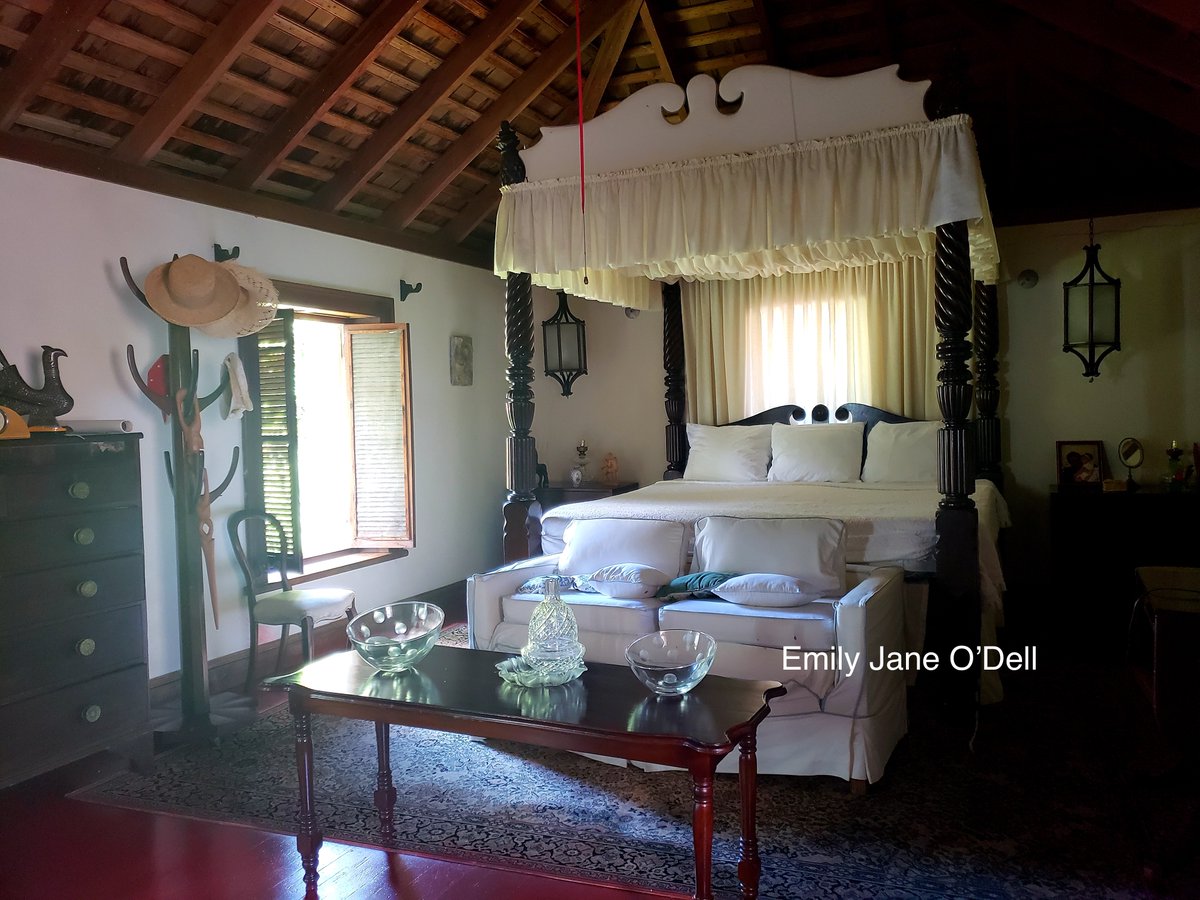
Master bedroom (Photo: Emily O’Dell)
The Jamaican design, decorations, and decor throughout the house also testify to their love of Jamaica. Johnny Cash wrote about his deep appreciation of Jamaica. He wrote: “When I take my walks and golf-cart rides down to the sea, I’m often stopped by local people who greet me warmly—“Respects, Mr. Cash, respects”—and I can’t count how many times I’ve heard gratitude for my decision to stay in Jamaica. And since the robbery I’ve been more involved in Jamaican life in various ways that have been very good for me. Today I feel truly at home in this beautiful country, and I love and admire its proud and kindly people.”
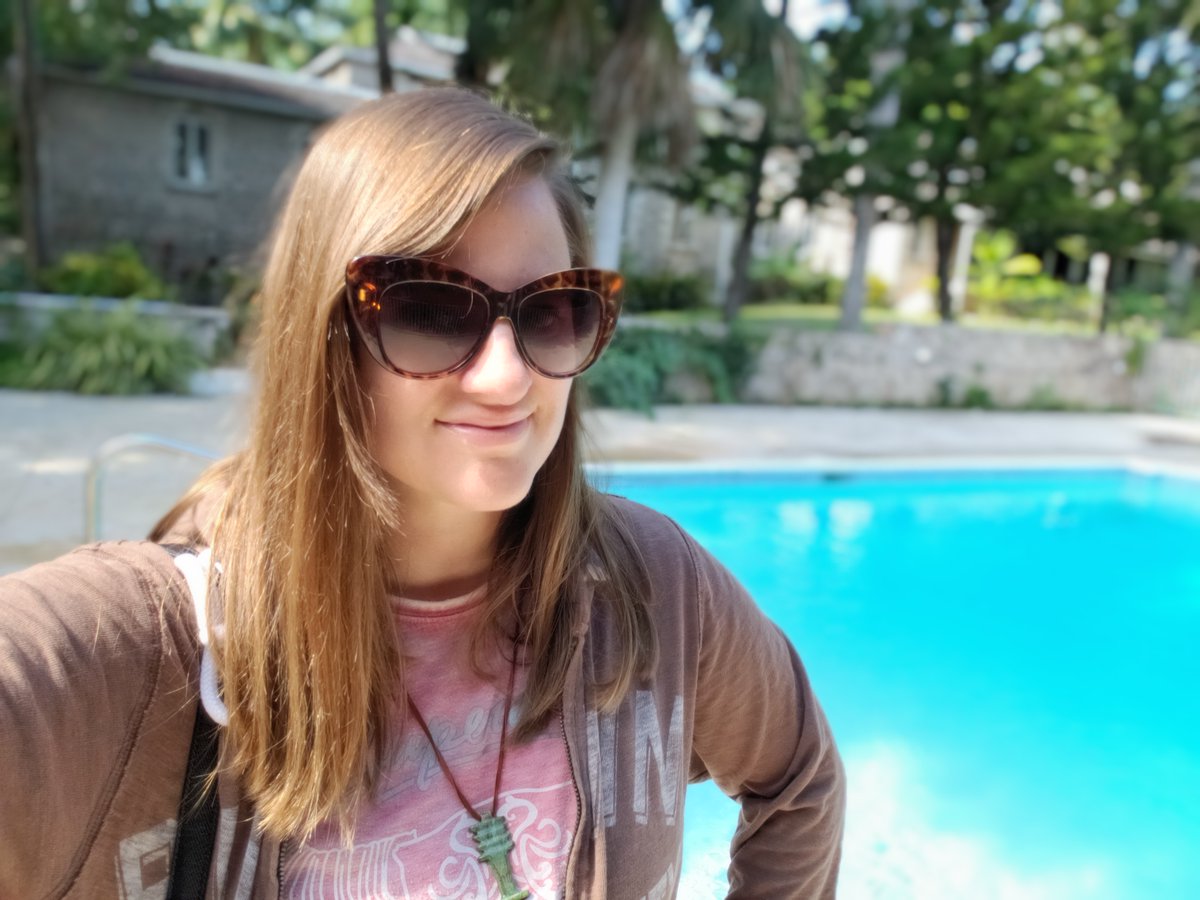
Pool time (Photo: Emily O’Dell)
Touring Cinnamon Hill was a really cool experience–it’s a fascinating, not-well-known time capsule of American-Jamaican history. Don’t miss it if you journey to Jamaica–it’s just a 30 minute ride from Montego Bay airport. It’s best to go soon before they open it up to the cruise ship masses who will be out swimming in June’s pool! Well, I hope you enjoyed this unique tour through American music history in Jamaica–isn’t it great?
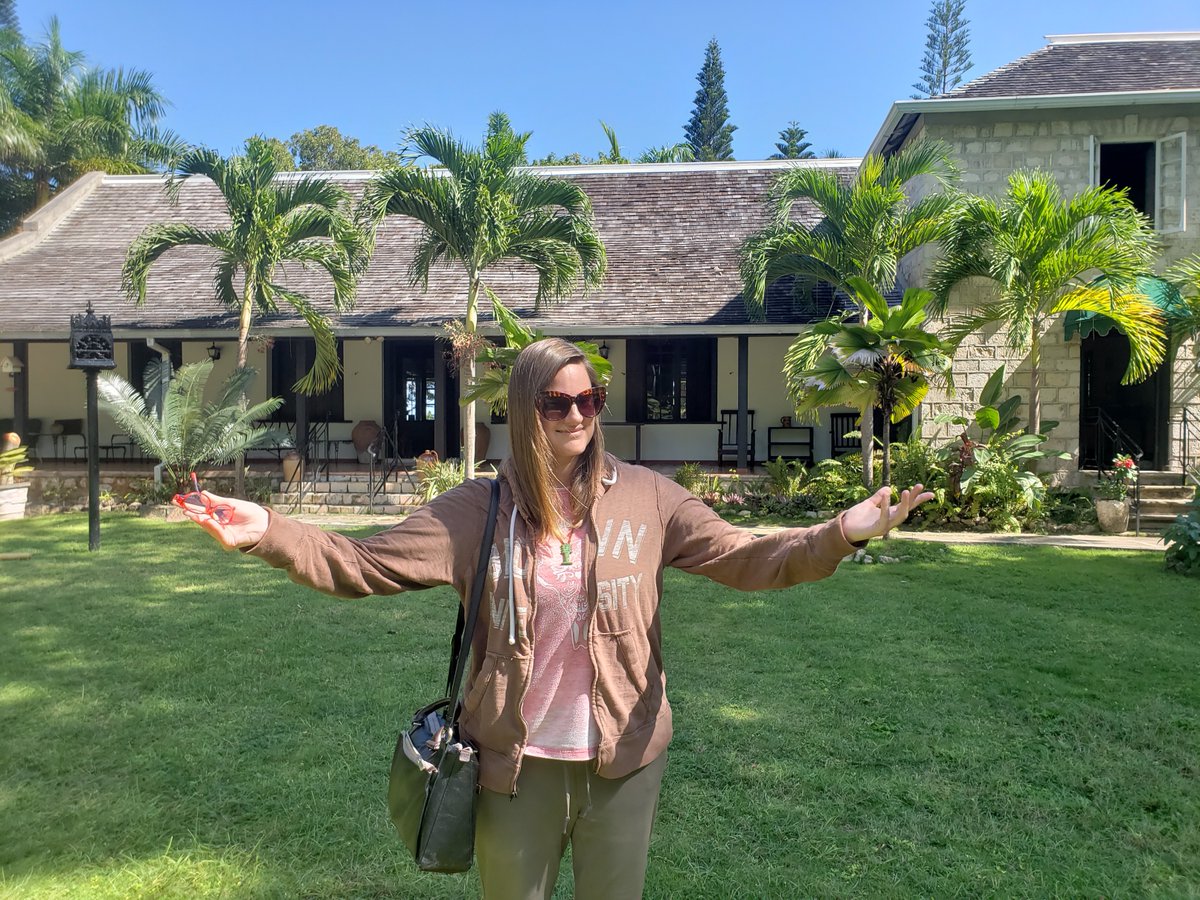
Cinnamon Hill (Photo: Emily O’Dell)

















